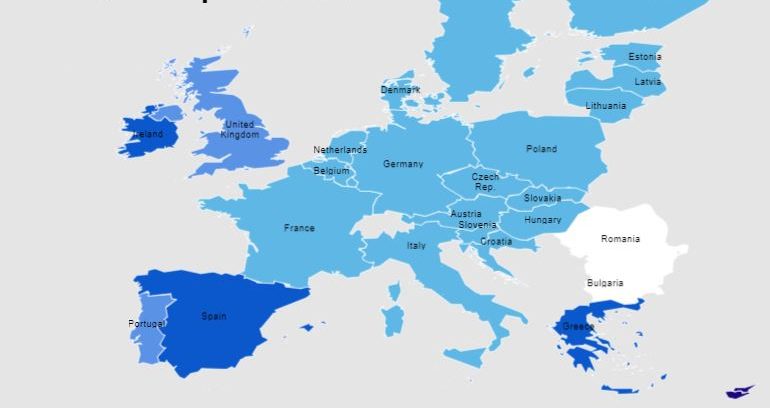Spanish institute charts levels of trihalomethanes in drinking water

-
 Editorial Team
Editorial Team
Share article:
New research analyses the presence of trihalomethanes in tap water in 26 European countries. Trihalomethanes are formed unintendedly as a by-product when chlorine is used to disinfect drinking water. According to the large-scale study led by the Barcelona Institute for Global Health (ISGlobal) more than 6.500 cases of bladder cancer—nearly 5% of all cases in Europe— can be attributed to exposure to trihalomethanes (THMs) in drinking water.
IS Global analysed in their study that was published on the 15th of January recent data on trihalomethanes levels in European municipal tap water. The study also estimated how many people suffer from bladder cancer that might be caused by exposure to these compounds. Earlier research has found a link between long-term exposure to trihalomethanes and an increased risk of bladder cancer. The new study was also published in the scientific journal Environment Health Perspectives.
Differences
The findings revealed considerable differences between countries. The annual average was the highest in Cyprus, Malta, Greece, Ireland and Spain. Trihalomethanes data for 2005 to 2018 were obtained for 26 European Union countries covering 75% of the population. Bulgaria and Romania are not included in the study because in these countries less information was available.
Questionnaires
The researchers sent questionnaires to bodies responsible for municipal water quality requesting information on the concentration of total and individual trihalomethanes (chloroform, bromodichloromethane, dibromochloromethane, and bromoform) at the tap, in the distribution network and at water treatment plants. Complementary data was obtained from open data online, reports and scientific literature.
Association with bladder cancer
The number of bladder cancer cases was estimated through a statistical calculation linking average levels of trihalomethanes with international information available of bladder cancer incidence rates for each country. In total, the researchers estimated that in the European Union 6.561 bladder cancer cases per year are attributable to trihalomethanes exposure. According to the study countries with the highest percentage of bladder cancer cases attributable to trihalomethanes exposure were Cyprus (23%), Malta (17%), Ireland (17%), Spain (11%) and Greece (10%). At the opposite extreme, there were Denmark (0%), Netherlands (0.1%), Germany (0.2%), Austria (0.4%) and Lithuania (0.4%).
Reducing levels of trihalomethanes
The authors of the study recommend that efforts to reduce trihalomethanes levels should focus on countries with the highest average levels. If the 13 countries with the highest averages were to reduce their levels of trihalomethanes to the EU average, the researchers estimate that 2.868 annual attributable bladder cancer cases—44% of the total— could potentially be avoided.
















